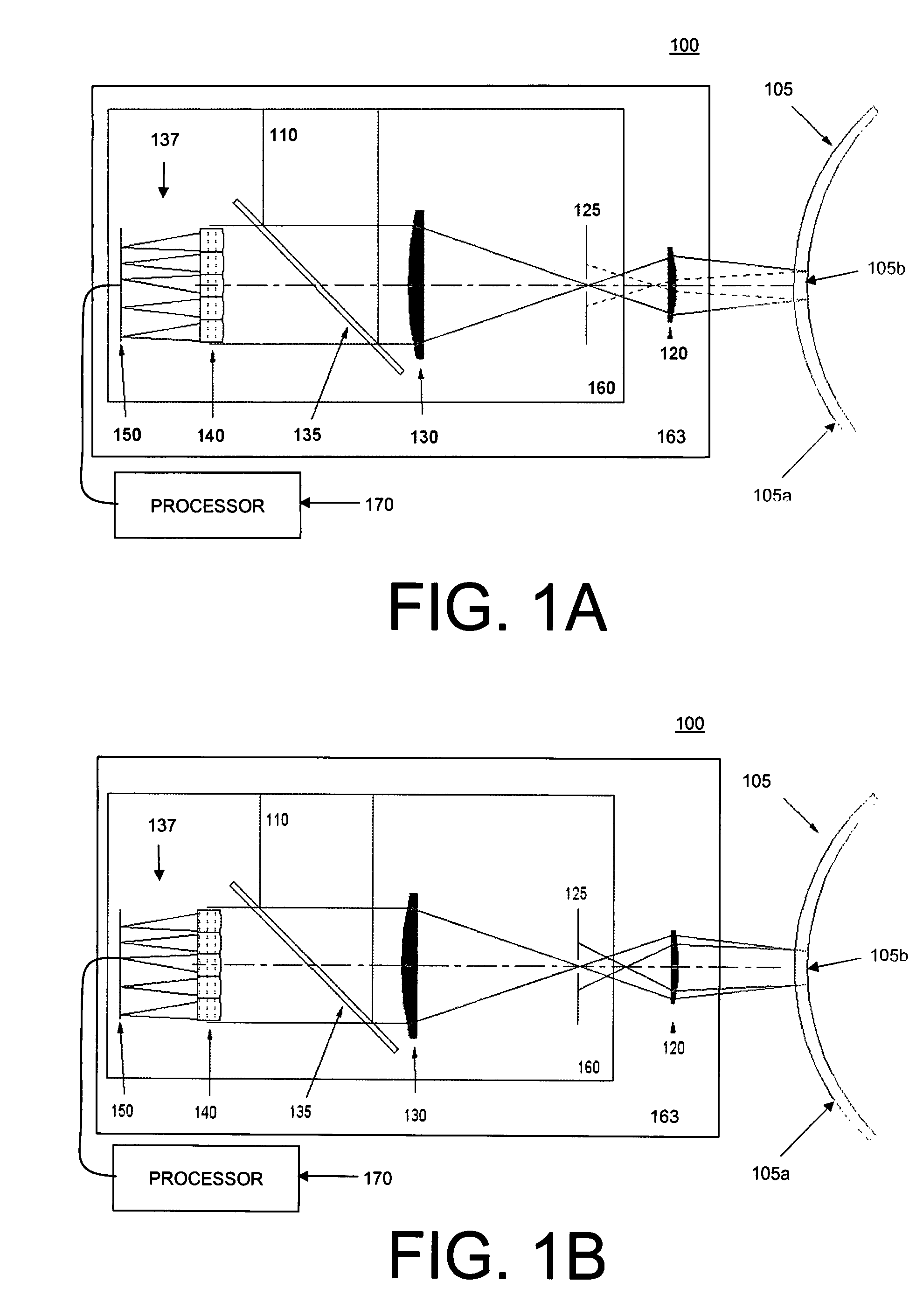Geometric measurement system and method of measuring a geometric characteristic of an object
a geometric characteristic and measurement system technology, applied in the field of measurement, can solve the problems of difficult application to highly curved surfaces and/or optically transmissive surfaces, difficult to project light onto the entire surface, and the degree to which the surface can depart from spherical is limited by the dynamic range of the measurement instrumen
- Summary
- Abstract
- Description
- Claims
- Application Information
AI Technical Summary
Benefits of technology
Problems solved by technology
Method used
Image
Examples
Embodiment Construction
[0029]As discussed above, it is desirable to characterize one or both surfaces of an optically transparent object, or an object having at least one substantially transparent surface, however, in general it is difficult to separate the reflection from the front surface from that of the back surface. However, in the case of a highly curved surface, such as is typical of a contact lens, contact lens mold, aspheric optic, IOL, cornea or other highly curved object, we disclose below systems and methods for separating the two surfaces in order isolate the surfaces for measurement and / or to measure the two surfaces (either sequentially or simultaneously).
[0030]FIGS. 1A-B functionally illustrate one embodiment of a geometric measurement system 100 for determining at least one geometric characteristic of an object 105, and an associated method of determining at least one geometric characteristic of the object 105, using a wavefront sensor. In particular, the system and method illustrated in ...
PUM
 Login to View More
Login to View More Abstract
Description
Claims
Application Information
 Login to View More
Login to View More - R&D
- Intellectual Property
- Life Sciences
- Materials
- Tech Scout
- Unparalleled Data Quality
- Higher Quality Content
- 60% Fewer Hallucinations
Browse by: Latest US Patents, China's latest patents, Technical Efficacy Thesaurus, Application Domain, Technology Topic, Popular Technical Reports.
© 2025 PatSnap. All rights reserved.Legal|Privacy policy|Modern Slavery Act Transparency Statement|Sitemap|About US| Contact US: help@patsnap.com



